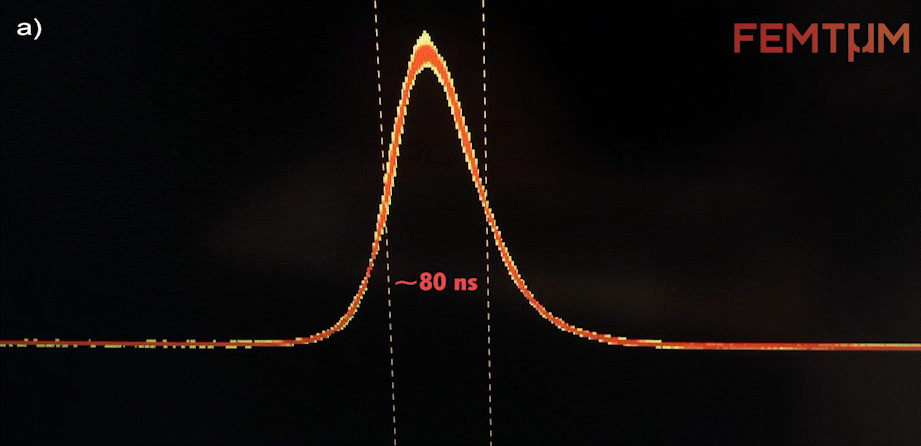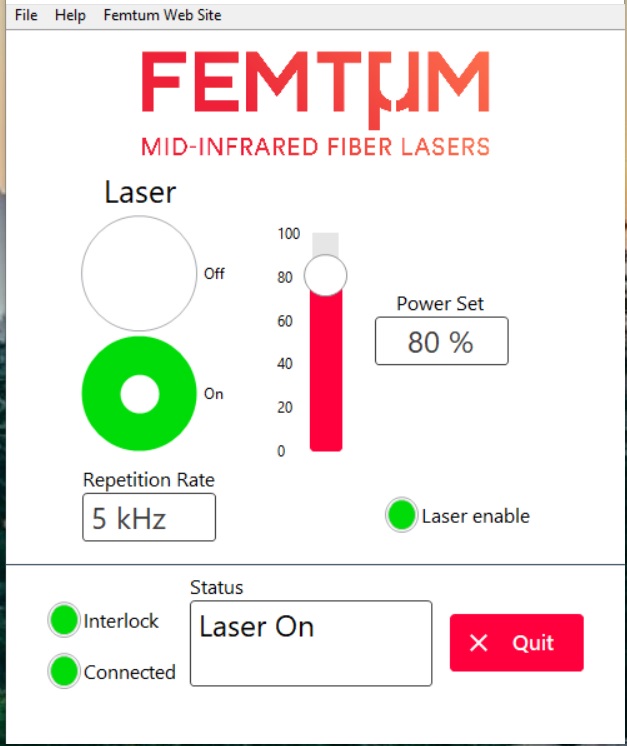Most of the time, when purchasing a product, we look for basic features like quality, value, and innovation. In the laser world, things are more complicated since these tools have various parameters to look (pulse duration, wavelength, peak power, energy or repetition rate). When lasers are used in challenging material processing applications, the requirements on these parameters can be very strict.
In the light-matter interaction world, short laser pulses are the viable solution for many materials processing applications. Recently, mid-infrared short-pulse fiber lasers have progressed from a promising technology to a leading role in manufacturing, thanks to advancements in soft-glass fibers and increasing demand for unique and selective materials processing applications. Femtum Nano 2800, a picture of maturity of fluoride fiber lasers in terms of reliability and performance, is the first mid-infrared industrial-grade fiber laser product that generates nanosecond pulses near 2800 nm, which is an important wavelength for non-metal laser processing applications such as patterning of thin films, biological tissue ablation, surface texturing of polymers, and semiconductor micro-processing. Nano 2800 can generate > 1 W average power with a nearly Gaussian pulse as short as 30 ns, and the pulse energy can reach > 100 μJ. As an example, a 80 ns-length pulse produced from Nano 2800 is shown in the Figure 1. Considering W-level average power together with high pulse energy, short pulse duration, and single-mode beam quality, depositing a very large amount of energy into a small spot in a short time scale enables high materials processing speeds and quality.
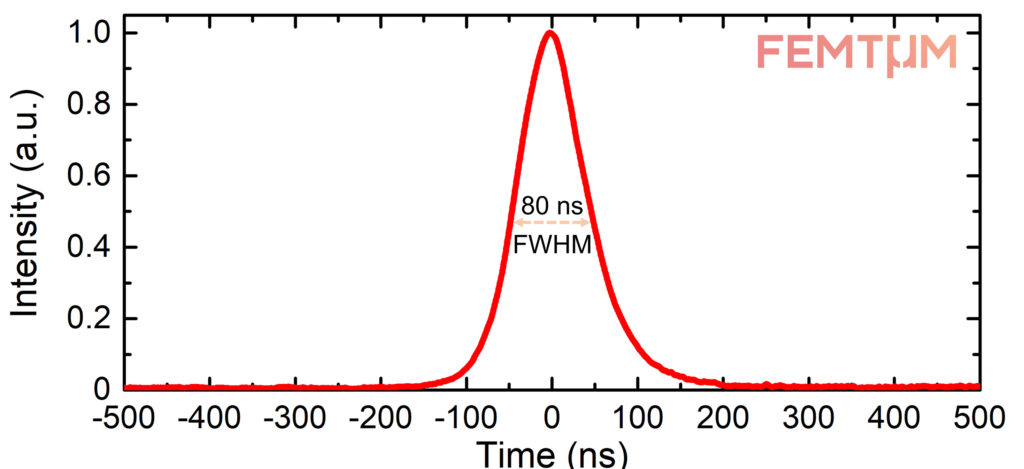
Control your wavelength according to your needs
Selecting accurate wavelengths for materials processing applications is of capital importance. For instance, biological tissue or polymer processing are one of the most popular treatments realized by lasers operating near 2800 nm since they benefit from a high absorption cross-section of liquid water located around that wavelength. For comparison, water absorption at 2850 nm is fifteen times higher than at 10600 nm, which is the standard wavelength of CO2 laser used in skin resurfacing or polymer processing. As shown in the liquid water absorption spectrum in Figure 2, the absorption depth changes tremendously in a short bandwidth of spectrum from 2.5 μm to 3 μm. One of the greatest advantages of Femtum Nano 2800 is the ability to choose your central wavelength near the water absorption peak from 2700 nm to 2850 nm with a linewidth of ~ 1 nm or less*.
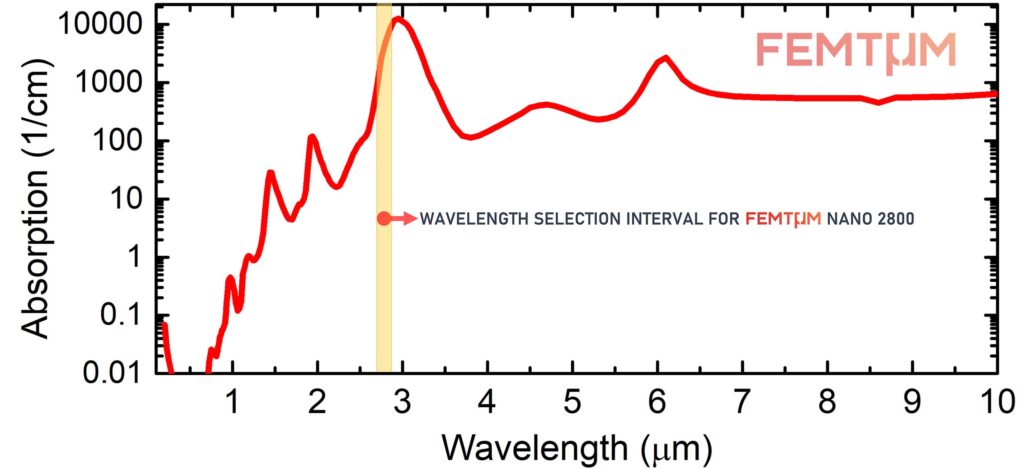
Unmatched pulse-to-pulse stability for high yield applications
Most of the time, being an ideal laser system in the laser world entails more than just ensuring an ideal wavelength and pulse duration because several processing applications require excellence in the basic parameters. Consistency in the pulse train is one of the most important parameters for ensuring repeatability and increasing process yield in most of the precise materials processing applications based on pulsed lasers. For instance, in the semiconductor manufacturing process where lasers are widely used, pulse-to-pulse stability plays a crucial role together with beam quality to insure precise processing outputs. Besides its single-mode beam quality, Femtum Nano 2800 offers superior pulse-to-pulse stability. A real-time heatmap showing the temporal stability of 50 μJ pulses from Nano 2800 is shown in Figure 3, in which the frequency of occurrence is very high in red and low in yellow. As shown in the color gradient, the overall variations in the pulse profile are very small. The output pulse train is also given in the following figure. The RMS peak-to-peak variation is < 3%*.
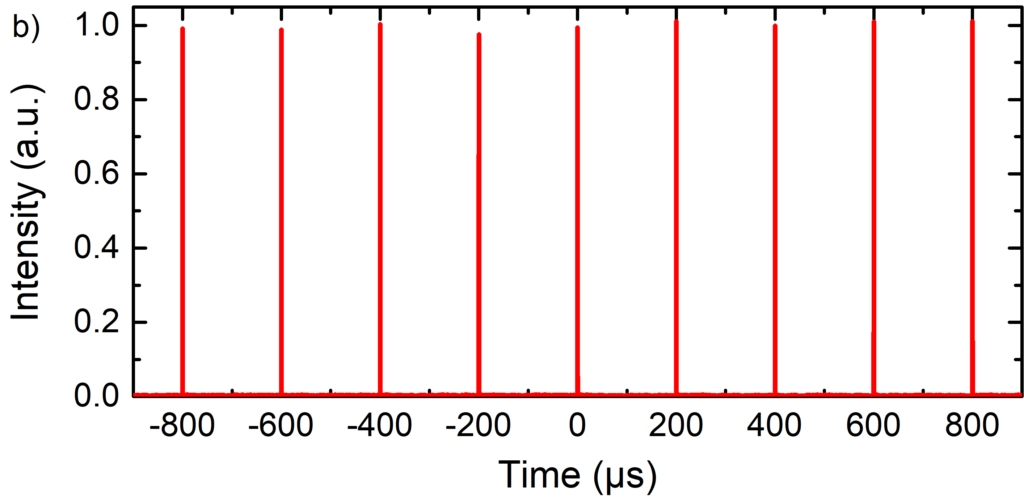
Superior architecture for long-term stability
The optical, mechanical, and electrical architecture of Nano 2800 are designed to increase stability against vibrations. Nano 2800 offers a significantly simplified laser design equipped with efficient long-life diodes and alignment- and maintenance-free efficient fiber laser architecture. These features enable enhanced reliability of the laser operation and reduce maintenance costs over time. Its compact, rugged rack-mount design enables mobility and saves space in the working environment. The use of air cooling rather than water cooling reduces energy consumption and provides a reliable long-life operation with high wall-plug efficiency. All of these features enable Nano 2800 to operate with excellent long-term power stability in stable environmental conditions (average power fluctuation less than 1% RMS* over 7 days). A 7-day non-stop operation of Nano 2800 generating 30 μJ pulses is shown in Figure 4 below. The output of the laser could be either free space or connectorized fiber cable according to your needs.
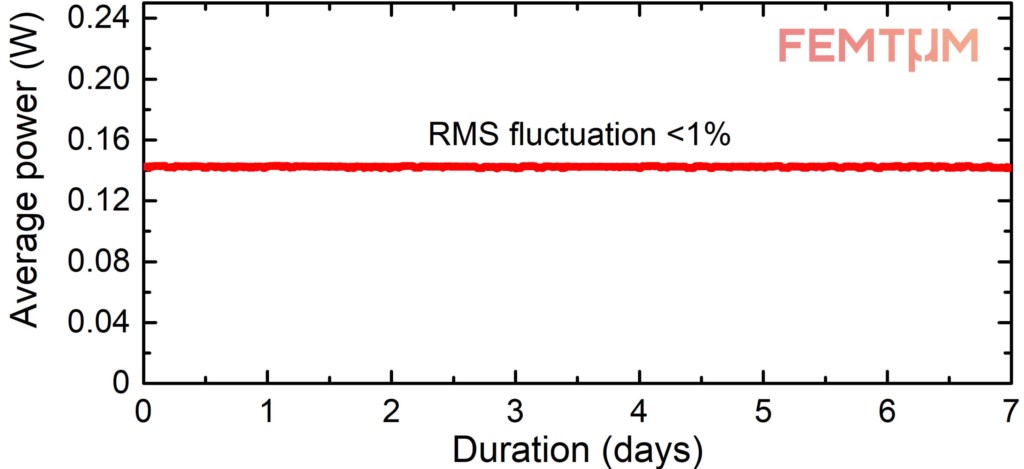
Turn-key system with simple control
Nano 2800 comes to your working space with a turn-key operation. Thus, the installation of the laser unit is quite simple and quick, without any need for expert operation. For the convenience of the user, the laser module can be controlled with a laptop/desktop computer via ethernet protocol. The intuitive Femtum software is designed for editing and setting up the laser parameters. Femtum lasers are thus compatible with both scientific and automated production platforms.
Learn more about Femtum lasers
Femtum brings innovative mid-infrared fiber laser solutions for your needs. If you want to learn more about the capabilities of Nano 2800 and other Femtum lasers you could visit the product page or you could contact us directly to discuss your application and your mid-infrared laser needs.

* Depends on the chosen laser parameters

